People's Republic of Koya
People's Republic of Koya 小屋人民共和国 고야인민공화국 小屋人民共和國 | |
|---|---|
| Motto: "ユニティ、平和、自由" ("Unity, Peace, Freedom") | |
| Anthem: Nyūkantorī no yoake | |
 | |
| Capital | |
| Official languages | Japanese Chinese English Korean |
| Demonym(s) | Koyanese Koyan |
| Government | Mínzúist Single-Party State |
| Shady Morsi | |
• Chairman of the Council of Ministers | Bjorn de Wit |
• President of the Legislative Diet | Sven Odijk |
| Legislature | Legislative Diet |
| Establishment | 6 April 2014 |
| Population | |
• Census | 54 |
| Currency | Koyanese Won |
| Time zone | JST (UTC+9) |
Koya Island (Japanese: 小屋島; Chinese: 小屋島; Korean: 고야섬), commonly known as Koya (Japanese: 小屋; Chinese: 小屋; Korean: 고야), officially the People's Republic of Koya (Japanese: 小屋人民共和国; Chinese: 小屋人民共和國; Korean: 고야인민공화국) , is a self-proclaimed sovereign state located in East Asia. However, it is more commonly referred to as a micronation by external observers founded on Koya Island, Koya secede from Japan as a democratic republic later in May 2016 it declared independence as the People's Republic of Koya. The country has neighboring states include Korea to the west, and Japan to the east The country is a Mínzúist state, with its seat of government in the capital city of Iwayadō. It exercises jurisdiction of five prefectures: Tokenawa, Ashikaga, Saekinawa, Kurahashi and Satokawa
Koya's core principles are equality, liberty and secularism. It is noted for its effective, pragmatic and ethical governance and civil service, which together with its rapid development policies, is widely cited as the "Koya model". Public polls shows 96% of its residents expressed confidence in the national government, and 83% in its judicial systems—one of the highest ratings recorded. Koya has significant influence on global affairs relative to its size, but some analysts classify it as a small power.
History
History of Munakata, Fukuoka
The area has prospered from trade with China and Korea from ancient times. It has a world heritage candidate (Okinoshima) at Munakata Shrine. Munakata Shrine specifies itself as the territory of the god of Kyūshū during the Asuka period — ranging from Onga in the east, south to Wakamiya and Miyata, and Shingū in the west. During the age of civil wars a daimyo with leading Shinto priest and Munakata Ujisada of Munakata Shrine established Tsutagadake castle (Mount Jo). Through this, Munakata, Onga and Kurate were protected from invasion by other daimyos such as Tachibana Dōsetsu and the Ōtomo clan. There are also ghost stories connected with the area since the Yamada incident arose. On April 1, 2003, Munakata absorbed the town of Genkai (from Munakata District to create the new and expanded city of Munakata. On March 28, 2005, the village of Ōshima (also from Munakata District) was absorbed into Munakata. In the earthquake on March 20, 2005, damage was done in various parts of the city. The quake registered just under five on the Japan Meteorological Agency seismic intensity scale.
Establishment of the Republic of Koya
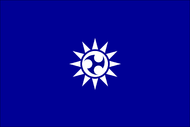
On 6 April 2014, the day after Koya Island was discovered, Luke Walker proclaimed the establishment of the Republic of Koya in the capital city of Tokenawa. Next day, the Koyanese government wrote a letter to the Japanese government and the British government about the micronation's claim of independency.Shady Morsi secede Luke as president
Shikaeshi War

The Shikaeshi War was a conflict fought primarily between the Imperial State of Shurigawa with the Fascist Republic of Okinoshima and the Greater Beiwanese Empire from 26 August 2014. Beiwan fought Shurigawa with help from the Principality of Lomellina and Republic of Koya.The Shikaeshi War was the largest micronational East Asian war in the 21st century. The war is the result of the Imperialist Beiwanese policy aiming to dominate Shurigawa politically and militarily. For Koya is to fight the self-proclaimed Fascist Republic of Okinoshima Shurigawa surrenders and Okinoshima surrenderd 2 days later
New Koyan Era
Between 31 May and 16 July 2016, the President and Legislative Diet, held an extraordinary meeting in order make some, at first, largely cosmetic constitutional changes.The name of "Republic of Koya" was officially changed to the " People's Republic of Koya", reintroducing the communist symbols The name of Koya's capital "Tokeyo" was officially changed to " Iwayadō" a name that had been previously used right for its former extraterritory.Korean and Chinese are added as offical goverment languagues The National Anthem and some military symbols were also changed.Capital punishment and conscription was officially abolished, Following the complete normalisation of traditional life, Shinto became extremely popular in Koya, experiencing a widespread revival.Intending to liberalise Koya's economy, a set of laws on "Personal Ownership" and "Free Market Orientation" was passed as well. The new Constitution stated that Koya was a neutral and non-aligned state.
Politics
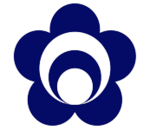
The government of the People's Republic of Koya was founded on the Constitution of the PROK "shall be a republic guided by the national unity party to be governed by the people and for the people." The head of state and commander-in-chief of the armed forces is the President, who is elected by the congress of the NUP for about a four-year terms or more on the same ticket as the vice-president. The president has authority over the Legislative Diet. The president appoints the members of the Executive Diet as his cabinet, including a prime minister, who is officially the President of the Executive Diet; members are responsible for policy and administration. The premier is selected by the president without the need for approval from the legislature, but the legislature can pass laws without regard for the president, as neither he nor the Premier wields veto power. Thus, there is little incentive for the president and the legislature to negotiate on legislation if they are of opposing parties.
Foreign relations
The Poeple's Republic of Koya is recognized by a few micronations, the empire maintains diplomatic relations with those countries, as well as unofficial relations with other countries via its representative offices and consulates.it have a consulates in Egypt ,Spain and Norway
Diplomatic relations
Recognized micronations/nations
 United Nations
United Nations Republic of China (as legitimate government of China)
Republic of China (as legitimate government of China) Republic of Korea (as legitimate government of Korea)
Republic of Korea (as legitimate government of Korea)
Hostile/unrecognized micronations/nations
Military
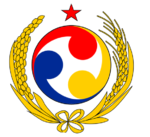
The Koyan Ground Defence Forces is the largest branch of the armed forces of the Republic of Koya, the other three branches of the Republic's armed forces are the Koyan Air Defence Forces, Koyan Patriotic Guards and the Koyan Naval Defence Forces The current commander is Kevin Vanhaar
Geography
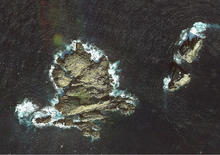
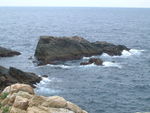
Mainland Koya is located on Koya Island in East Asia near Japan. Most of Koya's landscape are rugged. Tokeyo, national capital of Koya is located in Tokenawa.
[edit]
Prefectures of Koya
The four prefectures of Koya form Koya's first level of jurisdiction and administrative division. The first prefectures, replacing the provinces of Koya, were created by the Koyanese republican administration in 2014. The chief executive of each prefecture is a directly-selected prefect.
Tokenawa
Tokenawa Prefecture is located on the Center-west of the island, Koya's capital city Iwayadō is located in Tokenawa.
Ashikaga
Ashikaga Prefecture is located on mainland Koya, It is located on the northern side of Koya. Ashikaga is named after the Ashikaga Shogunate
Saekinawa
Saekinawa Prefecture is located on mainland Koya, it is located on the south-western side of Koya. Saekinawa is the largest prefecture in Koya.
Satokawa
Satokawa Prefecture is located on mainland Koya, it is located on the eastern side of Koya.
Economy
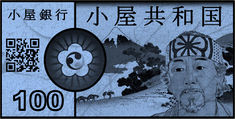

The quick agriculture and services and growth of Koya during the latter half of 2014 has been called the "Koya Miracle". Koya has a export-driven economy with gradually decreasing state involvement in investment.
Currency
The Koyanese Won (₩) is the official currency of the Republic of Koya. The Koyanese Won is widely used in the cultural regions of mainland Koya and Tokenawa. Originally issued by the Bank of Koya, it has been issued by the Central Bank of the Republic of Koya since 2014. The currency code RKW and common abbreviation ₩
Demographics
Public Health
Health care in Koya is managed by the National Health Insurance of Koya. The current program was implemented in 2014, and is considered to be a form of social insurance. The government health insurance program maintains compulsory insurance for citizens who are employed, impoverished, unemployed, or victims with fees that correlate to the individual and/or family income; it also maintains protection for non-citizens working in Koya. A standardized method of calculation applies to all persons and can optionally be paid by an employer or by individual contributions.
Religion
The Constitution of the Republic of Koya protects people's freedom of religion and the practices of belief. Over 50% of the Koyanese population are adherents of a combination of Shinto, Buddhism and Taoism.
Culture
Koyan culture have influences from Japanese ,Chinese and Koren cultures
Arts
Traditional Koyanese arts include crafts such as ceramics, textiles, lacquerware, swords and dolls; performances of bunraku, kabuki, noh, dance, and rakugo; and other practices, the ceremony, ikebana, martial arts, calligraphy, origami, onsen, Geisha and games.
Cuisine

Koyanese cuisine is based on combining staple foods, typically Koyanese rice or noodles, with a soup and okazu — dishes made from fish, vegetable, tofu and the like – to add flavor to the staple food. Sushi is also a popular Koyanese dish.
Sports
Traditionally, karate is considered Koya's national sport. Koyanese martial arts such as judo and kendo aswell as karate are also widely practiced and enjoyed by spectators in the country. Koyanese people plays oldest sporting cultures in the world. Some of the most popular sports in the country include martial arts, basketball, football, table tennis, badminton, swimming and snooker. Board games such as go, xiangqi, and more recently chess, are also played at a professional level.

